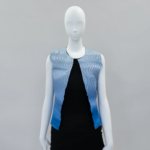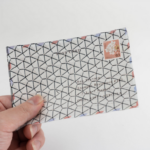A group from The University of Tokyo’s Department of Electrical Engineering and Information Systems recently published an article about their method to 4D print high resolution self-folding origami structures. Their method combines 4D printing, origami, and chemistry to create objects that have resolutions 1200 times higher than those from fused deposition modeling (FDM) 4D prints. This process has the potential to be used in numerous applications, and may even be a way to ship your Zara t-shirt in the future.
4D printing has been around for 10 years now, and is the process of 3D printing a material that can move when a stimulus like heat, light, or electricity is applied post print. The technology is actively being explored for use in construction, military, and space exploration, and could be a game changer for 3D printing. However, like all technologies, 4D printing also has its limitations, with one prominent limitation being unaided self-folding.
The group from the University of Tokyo, led by Assistant Professor Koya Narumi, sought to tackle this problem head-on and explore ways to leverage tessellations in order to speed up the self -folding process. The group’s idea was to print two-dimensional patterns atop a heat shrinkable sheet using commercially available UV inkjet inks and printers. After printing, the heat shrinking film was then heated via water, and the sheet would spontaneously morph into the desired shape. Based on the tessellations patterned, the stresses and strains could be predicted via simulations and designed in a way to contour into the desired form.

Image of the self-folding process with the 4D printed bouquet. (Image courtesy of ACM Transactions on Graphics)
The group says their biggest challenge was finding the right hardware and inks to use for this process. Through trial and error, they ultimately landed on Mimaki UJF-6042 MKII as the UV printer, Mimaki LUS150 (CMYK+White), LH-100 (clear), and PR-200 (primer) as the UV curable inks, and Hakko Shrink Film 841-02 and Vilene Iron Shrink Sheet OR-30N as the heat shrink films. With these selections, the group improved the resolution 1200 times that of a standard FDM 4D print and enacted the shape change process quicker and with less human involvement than previous research had shown.
Narumi’s team also showcased their technology’s potential end use applications with 5 different demos: a hat, a jacket, a bouquet of flowers, a ship in a bottle, and an envelope. In the future, the team says, they would love to explore other functional materials like conductive or magnetic inks, and attempt to achieve smoother surfaces using this technique.
- 4D printed hat. (Image courtesy of ACM Transactions on Graphics)
- 4D printed coat. (Image courtesy of ACM Transactions on Graphics)
- 4D printed bouquet. (Image courtesy of ACM Transactions on Graphics)
- 4D printed envelope. (Image courtesy of ACM Transactions on Graphics)
- 4D printed ship in the bottle. (Image courtesy of ACM Transactions on Graphics)
Overall, this is a great addition to the 4D printing community. Narumi’s team was able to find a solution to a issue that has been prevalent in the field and could be used in many industries such as fashion, space exploration, and medical. I can definitely see this joining the other efforts in 4D printing, and with how much interest 4D printing has seen over the past decade, we are sure the research will continue to flourish in this area.
Subscribe to Our Email Newsletter
Stay up-to-date on all the latest news from the 3D printing industry and receive information and offers from third party vendors.
Print Services
Upload your 3D Models and get them printed quickly and efficiently.
You May Also Like
Sustainability Meets Speed: How Latin America’s Medtech Industry is Reshaping Global Clinical Trials
The promise of additive manufacturing—specifically 3D printing—to transform medical device production is currently constrained by several critical factors. Medtech startups, in particular, face a formidable “proof-of-concept bottleneck.” They struggle not...
From Spare Parts to Strategic Advantage: How AM Is Reshaping Defense Readiness
When I talk with defense customers and partners about additive manufacturing, the conversation rarely starts with, “What can we print?” It usually starts with something like, “We can’t get this...
New 3D Printed Hydrogen Cell Factory Just Switched On in Catalonia
The Catalonia Institute for Energy Research (IREC) has opened a pilot plant that 3D prints advanced ceramic devices for renewable hydrogen systems. It’s described as the first facility on the...
3D Printing News Briefs, November 27, 2025: Awards, Sand Binder Jetting, Tabletop Gaming, & More
To all those who celebrate, happy Thanksgiving! In today’s holiday 3D Printing News Briefs, we’re starting off with some exciting news: the winners of this year’s Formnext Awards! Then, we’ll...





































